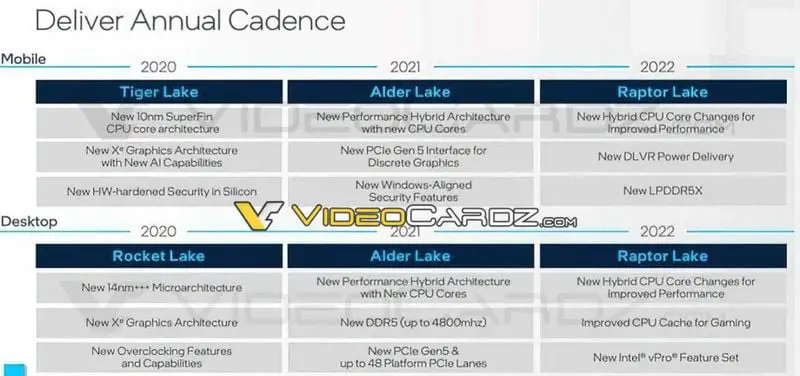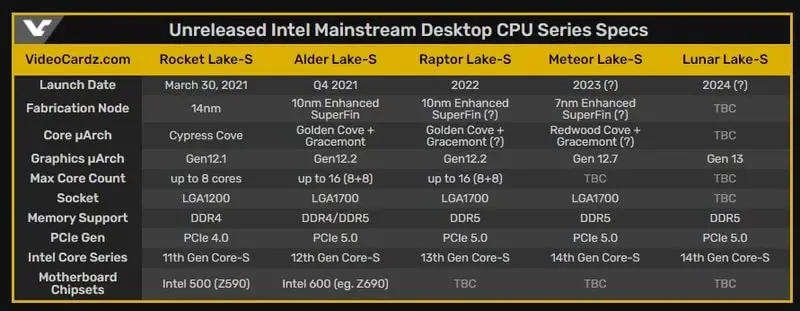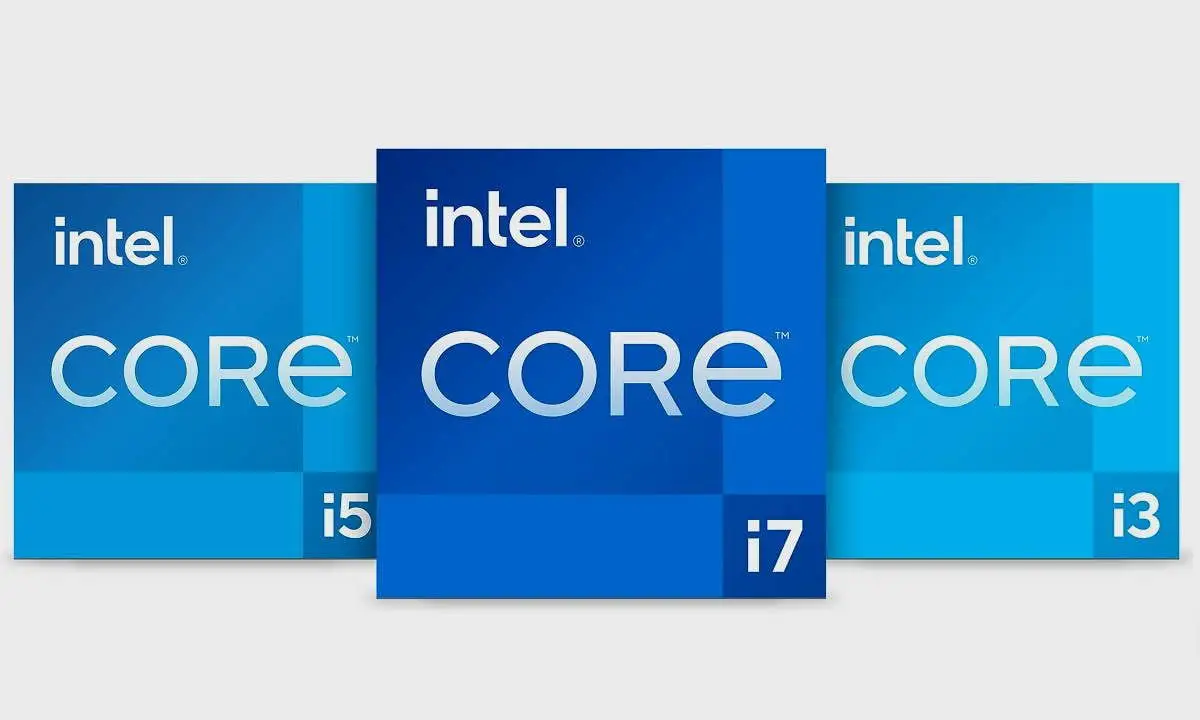Intel will improve gaming performance with Core Raptor Lake processors.
A leaked roadmap has given us a glimpse of some important nuances of the 13th gen Intel Core, known as Raptor Lake. This series of processors will be so that we understand, the successor to Alder Lake-S, which in turn will be the successor to Rocket Lake-S. Its launch is scheduled for March 30.
In the roadmap, we see a clear breakdown of two versions of the Intel Core Raptor Lake, the notebook version and the desktop version. Both will have many commonalities that we can summarize as follows:
- Hybrid architecture, with a big.LITTLE design in which two blocks of cores coexist, one high-performance and one high-efficiency.
- Next-generation memory support.
- Performance improvements, although the image does not indicate anything else. Intel Core Raptor Lake to improve gaming performance.

Intel Core Raptor Lake: Golden Cove and Gracemont, but with improvements at the cache level
According to the source of the leak, the always reliable VideoCardz, Intel Core Raptor Lake processors will use Golden Cove architecture on the high-performance (Core) cores, and Gracemont (Atom) architecture on the high-efficiency cores.
That’s the same configuration we’ll see in the Alder Lake-S, but in this case, the Intel Core Raptor Lake processors will come with unique cache-level improvements that will, in theory, boost gaming performance quite significantly.
Otherwise, we can expect full DDR5 memory support (LPDDR5X in the notebook version), support for the PCIe Gen5 standard, configurations of up to 16 cores (in blocks of 8 + 8), and the use of the 10 nm SuperFin manufacturing process. Intel Core Raptor Lake processors should be compatible with the LGA1700 socket.

Cache memory can have a huge impact on gaming performance. Since the introduction of the L3 cache, we have been seeing how its importance has been growing in this regard, and we were recently able to delve into it again when we analyzed the keys to AMD’s Zen 3 architecture.
This architecture achieved a significant increase in performance compared to Zen 2 thanks mainly to the unification of the cache available on each chipset. In Zen 2, each chipset had 16MB of L3 cache accessible per quad-core block, while in Zen 3 each 8-core block can access 32MB of L3 cache.
We do not yet know what Intel plans to do, but, likely, one of the most important developments to improve the cache system will be to increase the amounts available. Intel Core Raptor Lake processors will not arrive until 2022 at the earliest.





